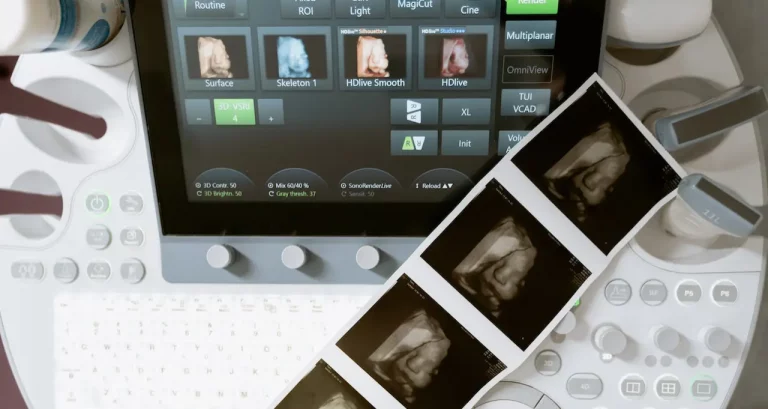Why Chain of Custody is Essential to Secure ITAD
Current cybersecurity statistics indicate that there are over 30,000 cyber-attacks a day. In 2022, the average cost of a data breach reached a record high of $4.35 million. Because of this, data security throughout the IT asset lifecycle is one of the biggest challenges most businesses face. We’ll look at how chain of custody is essential to secure ITAD.
The IT Asset Lifecycle
The IT asset lifecycle tracks an IT asset from the time it enters an organization’s ecosystem through retirement. Different industries and businesses may have their own processes for how this is done, but the asset lifecycle typically follows six basic stages:
- Request
- Fulfill
- Deploy
- Monitor
- Service
- Retire


During each stage of this lifecycle, cybersecurity is a must. In fact, IT asset lifecycle management doubles as a risk mitigation tool. Keeping an accurate inventory and knowing where each asset is in its lifecycle helps reduce vulnerability.
This is especially important when an asset is ready to be retired. The end of an IT asset’s useful lifecycle means that asset will be leaving the organization’s protective walls, both virtually and physically. As a result, this is a prime time for breach.
That’s where secure IT asset disposition (ITAD) comes in.
The Role of Chain of Custody in Secure ITAD
ITAD programs help mitigate the risks associated with end of lifecycle IT assets. Whether recycling, reusing or destroying an asset, maintaining chain of custody is essential during each step of the disposition process:
- Collection
- Transportation
- Destruction
- Processing and Resale
- Reporting
Chain of custody means tracking the movement of IT assets from the moment they’re no longer needed until they’re securely disposed of. This includes asset tags and documentation which catalogues an asset’s location and whose possession it’s in at all times.
This documentation is essential in the case of an audit. In a legal or regulatory investigation, showing chain of custody helps prove that an asset was accounted for at every step of disposition. An unbroken chain of custody means that the evidence is secure, has not been tampered with, and can be relied upon in court.
Additionally, secure chain of custody helps maintain both data security and privacy. This keeps companies in compliance with regulations such as GDPR (General Data Protection Regulation) and HIPAA (The Health Insurance Portability and Accountability Act.)
Risks of Not Maintaining a Secure ITAD Chain of Custody
The risks associated with not having a secure chain of custody in the ITAD process can be significant. Due to the inherent vulnerability in taking an IT asset off premises, those assets present a security risk. Without secure disposal, sensitive data can be accessed by malicious actors. This leads to legal and regulatory non-compliance and financial losses.
Numerous governmental regulations require businesses to dispose of electronic devices containing sensitive data securely. Failing to comply with these regulations can result in hefty fines, legal action, or both. For example, Morgan Stanley Smith Barney was hit with $155 million in fines and penalties in 2022. This was due to the improper disposal of data-bearing devices containing customer personal identifying information.
Beyond fines and legal penalties, breaches also result in damage to a business’ reputation. A brand’s success rests in large part on the establishment of consumer trust. When a data breach leaks those consumers’ personal information, they lose faith in a business’ ability to keep their data safe. Ultimately, this loss of trust leads to fewer customers and declining revenue.
ITAD Chain of Custody Best Practices
Chain of custody is essential to secure ITAD. But how does a business or organization ensure they’re protected?
Current best practices include:
- Developing an ITAD process
- Conducting due diligence when selecting an ITAD vendor
- Implementing secure data erasure
- Tracking and documenting the disposal proces
Develop an ITAD Process
A comprehensive ITAD process should outline the steps for securely disposing of electronic assets. The first step is rethinking how your company views old IT tech. Rather than unwanted pieces of junk taking up space, they’re assets. In fact, they can often be monetized via resale or recycling. Even if destined for destruction, they must be properly sanitized so as not to become a liability.
Conduct Due Diligence When Selecting an ITAD Vendor
With so much at stake, many businesses choose to seek outside help. However, not all ITAD vendors are the same. Reputable ITAD companies will have current e-waste certifications like R2/RIOS, which is recognized by the Environmental Protection Agency. Additionally, given their handling of sensitive data, the best vendors carry cyber insurance to protect both themselves and their clients.
Implement Secure Data Erasure
Aside from physical electronic devices, data is an important IT asset. When transitioning old IT tech out of a company’s network, it’s critical to first address the data. Methods such as reformatting, data wiping, file shredding, and factory resets are incomplete methods. To remain compliant with HIPAA, HiTech, PCI, Gramm-Leach-Bliley Act and NIST SP 800-88, electronic devices should be securely erased using accepted standards. Overwriting, block erase, and cryptographic erase ensure that sensitive data is not accessible.
Track and Document the Disposal Process
From the moment of collection, you should track and document IT assets to maintain an unbroken chain of custody. This includes onsite data destruction or secure transport to an offsite facility. Once there, all equipment should be subject to an additional audit and inventory. Following processing, an ITAD vendor will issue a Certificate of Destruction so there is an audit trail and accounting of all equipment.
Partner with an ITAD Professional
ITAD services complete the lifecycle of end-to-end data security. By providing an unbroken chain of custody, GCI protects your assets from the moment they leave your facility until they arrive at ours. For secure ITAD services click below.
or call 770-886-4200
